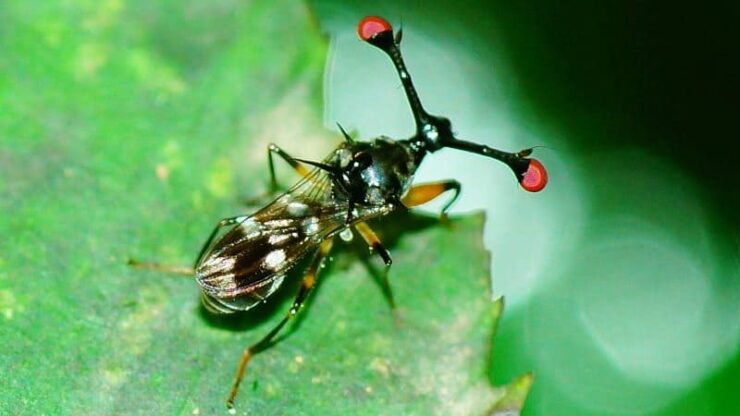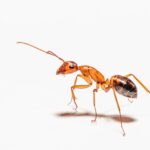If this is such a terrible mutation, why hasn’t it been bred out by generations of sexual selection?
In a study published in Frontiers in Ethology, scientists found that males with shorter eyestalks tend to make up for their physical deficiency with increased aggression.
Driving X Chromosome in Stalk-Eyed Flies
The family Diopsidae, better known as the Stalk-eyed flies, are usually found in wet areas along rivers and streams. These flies, which are about one centimeter long, have really interesting behaviors, especially when it comes to mating competition. The study found that males with shorter eyestalks, driven by a genetic variation known as a “driving X chromosome”, exhibited more aggressive behaviors in contests against similarly endowed males. Driving X is different in that it not only drives its way into the next generation, but it also biases towards female offspring.
Males with Shorter Eyestalks Exhibit Increased Aggression
The experiment consisted of watching a group of male flies with different variants of the X chromosome fight each other, but matched by eyestalk size, to determine their level of aggression. The findings showed that males carrying the driving X chromosome were more likely to engage in fights rather than displays and often emerged victorious in these aggressive encounters, particularly when fighting flies with similarly sized eyestalks.
Stalk-Eyed Flies Mating Competition Behaviors
The research seems to imply that this aggression allows the shorter-eyestalked males to gain access to females that are initially attracted to the longer-eyestalked males. By fighting their way into these contests, these aggressive males gain opportunities they wouldn’t have otherwise. Yet, this belligerence does not completely compensate for the advantage of the longer eyestalks, so the frequency of the shorter eyestalk variant remains relatively low.
Shorter-Eyestalked Males Gain Access to Females Through Aggression
Future research will have to determine if this increased aggression is due directly to the driving X chromosome or simply an indirect result of smaller eyestalk size. The study, while insightful, also raises questions about the behavior of females carrying this chromosome and whether similar traits might emerge.
Understanding how aggression compensates for physical disadvantages in stalk-eyed flies provides a fascinating look at the complexities of evolution and mating competition.

















